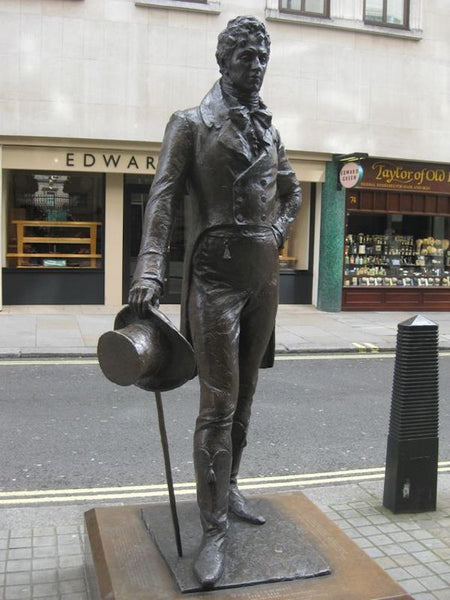The Best White Shirt

A History of The Great White Shirt
One thing is true: whatever the state of his wardrobe, a man always needs a classic white shirt. Whether it is to be worn with a suit, a blazer, or just casually combined with jeans or chinos. You need it because the perfect white shirt serves you for all your landmark events. Don’t believe me? Check it out:
Job interview and first day of work? White dress shirt.
Wedding? Confirmation? Graduation? White dress shirt.
Funeral? Whether you are a guest or in the coffin, chances are you will be wearing a white dress shirt.
And it goes on… Pitti peacocks, red carpet heroes, lifestyle influencers and Oscar winners all have one secret weapon: the perfect white shirt.

And if you have the misfortune to find yourself in court, wear a white shirt (P.S. the judge will also be wearing one).

So where did this particular piece come from? Let’s firstly take a look at its history.
Essentially unchanged since the late 19th century, a white shirt has been peeking out from under men’s coats in prints and oil paintings for over 500 years. However, by the late 18th century the white shirt was in a bad way. Embellished with lace and groaning under the weight of superfluous details, its puff sleeves dripping long frilly cuffs, things were getting out of hand. But this ended abruptly around 1801 when George “Beau” Brummell was released from the 10th Royal Hussars and moved to London with some inheritance and his military uniforms. Already known for his military style, Brummell developed a relationship with a Bond Street tailor. The purpose; to create an entirely new and revolutionary wardrobe for himself to enter society. Brummel transformed the knee-length silk tights and extended the leg down to the ankle to create full-length trousers, in tan or buff. He abandoned long coats for a short navy blue jacket based on a military riding jacket. Finally, we have the undergarment, the statement piece, and what did he decide upon? A simple white shirt.

So, what did we get? Effectively chinos, a navy blazer and a white shirt ... hmm, haven’t we seen this combination before over the last 200 years?

To help you understand his importance Brummell didn’t just stop with redesigning men's daywear he turned world of man upside down. Long hair and beards were banished to barber’s floor. Brummell wore his hair short, was clean shaven and took daily baths: Filth was out, grooming was in. Brummel was unstoppable; exercise was introduced for men to maintain a healthy figure, morning rides in Hyde Park were used to arrange the affairs of the evening, catch up on gossip, and to show off one’s fashions including a pristine white shirt.

The modern flat fronted white shirt would go on to become the uniform for man for the next 200 years. Some claim the white shirt was for the rich, as a symbol of wealth since they didn’t stain the shirt with the grime of manual labour. White collar vs Blue collar. Perhaps. However, there are 1000’s of early photographs of men and women of all classes, from banks to dingy workhouses wearing a white shirt or at the least a white collar.

It was a garment that showed an aspiration to rise above the dirt of one’s surroundings. The colour white was associated with morality, trustworthiness, piety and respectability, regardless of occupation.

With the industrial boom in the early part of the 20th century, it wasn't long before businessmen made the white dress shirt a required uniform for the office environment.
In 1924 the founding father of IBM, Thomas J. Watson, demanded his office employees to wear a classic white shirt as part of their attire. This association with ideals of steadfastness - promoting American honesty, trust and masculinity in business - prevails today. Of course, industry another key role in the success of the white shirt: the washing machine. With home laundry increasingly easy, white shirts could be kept white.

After the First World War, a societal shift occurred and a new, softer and more fluid look developed for less formal clothing, still involving white. One of the key influences at this time was the Prince of Wales, a popular leader of fashion at the time. His rejection of the constraints of the stiff collar, replacing them with soft-collared shirts created a major shift in menswear.

With his interests in sporting apparel the white shirt moved quickly into casual wear in the form of polos and short sleeve shirts.
In the thirties and forties, the white shirt was popularised by female stars, such as Marlene Dietrich who popularised suits for women. In those years, femininity was particularly under the spotlight. In the '50s the white shirt grew into a staple youth statement shirt with rising stars of the time.


In the Sixties, the white shirt was turning into an androgynous piece, an unconscious feminist manifesto. In a 1967 shot, Twiggy wore a pinstriped suit, a white shirt and tie, reviving the successes of actresses who had conquered the look long before.

The white shirt was not only for the office worker. Writers, movie stars and music icons brought their own interpretations to the classic apparel. The crispness of the white shirt shone out from thousands of posters and postcards of the era’s movie icons. The jazz musicians of the 1950s always came complete with a white shirt, the crisp cleanliness of the shirt contrasting with jazz’s seedy image.

Among all the pictures showing the history of the white shirt, Robert Mapplethorpe’s black and white portrait of Patti Smith, the cover of her first album, Horses, is legendary: Patti became an androgynous icon, the album a best seller, the white shirt - in this masculine version - a must-have.
The white shirt is a psychological tool, a sign of confidence – no colour, no stripes; no busy design to distract the attention, your personality will be the key focus of scrutiny instead of your clothes.
Today the white shirt is often the favoured option for top fashion designers too like Tom Ford and Karl Lagerfeld who, rather than being wallflowers and the object of their art, they prefer to remove themselves from it in order to let their work stand on its own merit.


If you’re meeting someone for the first time, the white shirt can be the perfect blank canvas to let your own personality shine because your audience will not be able to prejudge you. And the white shirt really does go with everything. Team one with your favourite pair of chinos or denim and of course it will work wonders for your entire office wardrobe.

So this is why SJC has made a white shirt, but how did we do it? With a slimmer fitting pattern we added a soft, pointed French collar for instant elegance.

SJC used soft creamy white 100% long-strand cotton that was woven into 180 gram (6oz) cellular cotton weave. This open weave has small holes, ventilating the shirt, allowing air to pass in and out, so you stay cool all day. And, as a gentleman supposedly never removes his coat, this is the perfect summer shirt for life in, or travel to, a warm climate.
the-best-white-shirt

For simplicity, our shirt has button cuffs in a beautiful mother of pearl. There are no pockets to keep the shirt front flat and remove any kind of work detail. This shirt is as simple and as elegant as can be and I believe I have created what is this summer’s most perfect white shirt.

Are you now convinced that the white shirt is a true wardrobe essential? A piece that one just can’t afford to be without? I hope so. So, let’s give thanks to Beau Brummell, read this book of his life, and let’s celebrate the classic white shirt and the brilliance it has given us. Let’s rejoice a wardrobe standard that has maintained its cool, sophisticated appeal and timeless versatility for what it is; an amazingly effective garment. The classic white shirt will give you tireless service and serve you perfectly for every event: day or night, work or play.